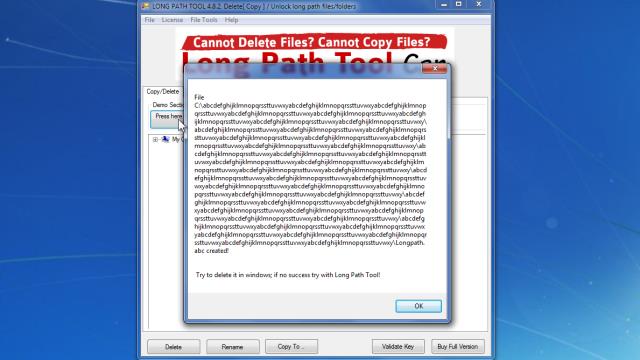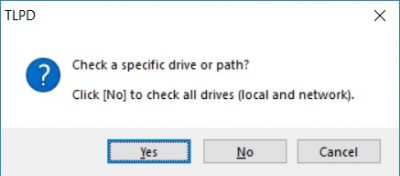
That is, if the root directory is on drive D, you cannot use relative paths to navigate to a directory on drive E. Only paths on the same disk are converted Datasets used for the default value property.At the bottom of the dialog box, check Store relative path names (instead of absolute paths). You can also set this option by right-clicking the script tool, clicking Properties, then clicking the General tab. When using the Add Script wizard, the option to store relative paths will appear on the first panel. Absolute and relative paths in script tools When you store your model using relative paths, only those paths that are on the same drive are converted and stored. At the bottom of the dialog box, check Store relative path names (instead of absolute paths), as shown below.

To store as relative paths, right-click the model tool, click Properties, then click the General tab.

#New long path tool windows
If you wanted to navigate to the Landuse directory from the current directory ( Soils), you could type the following in the Windows Explorer Address box: The current directory is sometimes referred to as the root directory. After navigating to this directory, a relative path will use D:\Data\Shapefiles\Soils as the current directory (until you navigate to a new directory, at which point the new directory becomes the current directory). In the example directory structure below, assume you used Windows Explorer to navigate to D:\Data\Shapefiles\Soils. A single dot represents the current directory itself. Double dots are used for moving up in the hierarchy. Relative paths make use of two special symbols, a dot (.) and a double-dot (.), which translate into the current directory and the parent directory. Relative pathĪ relative path refers to a location that is relative to a current directory.

ThePath = r"E:\data\telluride\newdata.gdb\slopes"Ībsolute and relative paths Absolute, or full, pathĪn absolute, or full, path begins with a drive letter followed by a colon, such as D. A common technique is to escape the backslash, as follows: Since paths can contain backslashes, you need to prevent backslashes from being used as the escape character. For example, \n signifies a carriage return. Programming languages that have their roots in UNIX and the C programming language, such as Python, treat the backslash ( \) as the escape character. Throughout ArcGIS, it doesn't matter whether you use a forward or backward slash in your path-ArcGIS will always translate forward and backward slashes to the appropriate operating system convention. The Windows convention is to use a backward slash ( \) as the separator in a path. Location is a catchall term for path, as in "Browse to the location of your data" or "Enter the location of your data." Forward versus backward slashes Workspace and base nameĬatalog paths consist of two parts: the workspace and the base name, as illustrated below: Location Of course, everything in ArcGIS can operate with catalog paths. This is not a valid system path as far as the Windows operating system is concerned, since Windows doesn't recognize feature datasets or feature classes within a file geodatabase. Refers to the powerlines feature class found in the EastValley feature dataset in the file geodatabase Infrastructure. D:\Data\Final\Infrastructure.gdb\EastValley\powerlines


 0 kommentar(er)
0 kommentar(er)
